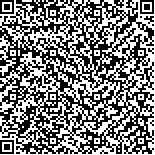谢文霞,叶伟,程芳芳,等.低频重复经颅磁刺激联合针刺治疗对脑卒中后上肢运动功能障碍患者的影响[J].中华物理医学与康复杂志,2023,45(10):888-892
扫码阅读全文

|
| 低频重复经颅磁刺激联合针刺治疗对脑卒中后上肢运动功能障碍患者的影响 |
|
| |
| DOI:10.3760/cma.j.issn.0254-1424.2023.10.005 |
| 中文关键词: 重复经颅磁刺激 针刺 脑卒中 康复 运动功能 |
| 英文关键词: Transcranial magnetic stimulation Acupuncture Stroke Motor functioning |
| 基金项目: |
|
| 摘要点击次数: 3771 |
| 全文下载次数: 4838 |
| 中文摘要: |
| 目的 观察低频重复经颅磁刺激(rTMS)联合醒脑开窍针法治疗脑卒中后上肢运动功能障碍的临床疗效。 方法 选择符合标准的脑卒中后上肢运动功能障碍患者40例,按随机数字表法将其分成对照组和联合组,每组患者20例。2组患者均接受神经内科基础药物治疗和常规康复治疗,对照组在此基础上增加醒脑开窍针刺法,联合组则在对照组干预方法的基础上再增加rTMS治疗。2组患者均每日治疗1次,每周治疗5 d,连续治疗2周。于治疗前和治疗2周后(治疗后)分别对2组患者进行Brunnstrom运动功能分期、改良的Ashworth痉挛分级、Fugl-Meyer上肢运动功能评分、改良的Barthel指数评分和神经电生理指标的检测[运动诱发电位(MEP)的潜伏期和波幅]。 结果 治疗后,2组患者的上肢运动功能分期和和手运动功能分期较组内治疗前均显著改善(P<0.05),且联合组患者治疗后的手运动功能分期显著优于对照组治疗后,差异均有统计学意义(P<0.05)。治疗后,2组患者的Fugl-Meyer上肢运动功能评分和Barthel指数较组内治疗前均显著改善(P<0.01),且联合组患者治疗后的Fugl-Meyer上肢运动功能评分和Barthel指数亦显著优于对照组治疗后,差异均有统计学意义(P<0.05)。治疗后,2组患者的MEP潜伏期和MEP波幅较组内治疗前均显著改善(P<0.05),且联合组患者治疗后的MEP潜伏期和MEP波幅分别为(23.53±0.92)ms和(0.98±0.19)mV,均显著优于对照组治疗后,差异均有统计学意义(P<0.05)。 结论 在常规神经内科药物治疗和康复治疗基础上,采用低频rTMS联合醒脑开窍针刺,可显著改善脑卒中后上肢运动功能障碍患者的运动功能、日常生活活动能力和神经电生理参数。 |
| 英文摘要: |
| Objective To observe the clinical efficacy of combining repeated transcranial magnetic stimulation (rTMS) at low frequency with xing nao kai qiao acupuncture in the treatment of upper limb motor dysfunction after a stroke. Methods Forty stroke survivors with upper limb motor dysfunction were randomly divided into a control group and a combination group, each of 20. All received basic neurological medication, conventional rehabilitation treatment, and xing nao kai qiao acupuncture. The combination group additionally received rTMS. Both groups were treated once a day, 5 days a week for 2 weeks consecutively. Before and after the treatment, both groups were evaluated using the Brunnstrom motor function stages, modified Ashworth spasticity grades, Fugl-Meyer upper limb motor function (FMA-UE) scoring, the modified Barthel index (MBI), and motor evoked potential (MEP) latency and amplitude. Results The upper-limb and hand motor functioning of both groups improved significantly compared with before the treatment. The hand motor function staging of the combination group was then significantly better than among the control group. The average FMA-UE and MBI scores of both groups improved significantly, with significantly greater improvement in the combination group than in the control group. MEP latency and amplitude also improved significantly in both groups, with the average MEP latency and amplitude of the combination group superior to the control group′s averages. Conclusion Supplementing xing nao kai qiao acupuncture with low-frequency rTMS can significantly improve the motor functioning, spasticity, and skill in the activities of daily living of stroke survivors with upper limb motor dysfunction. |
|
查看全文
查看/发表评论 下载PDF阅读器 |
| 关闭 |
|
|
|